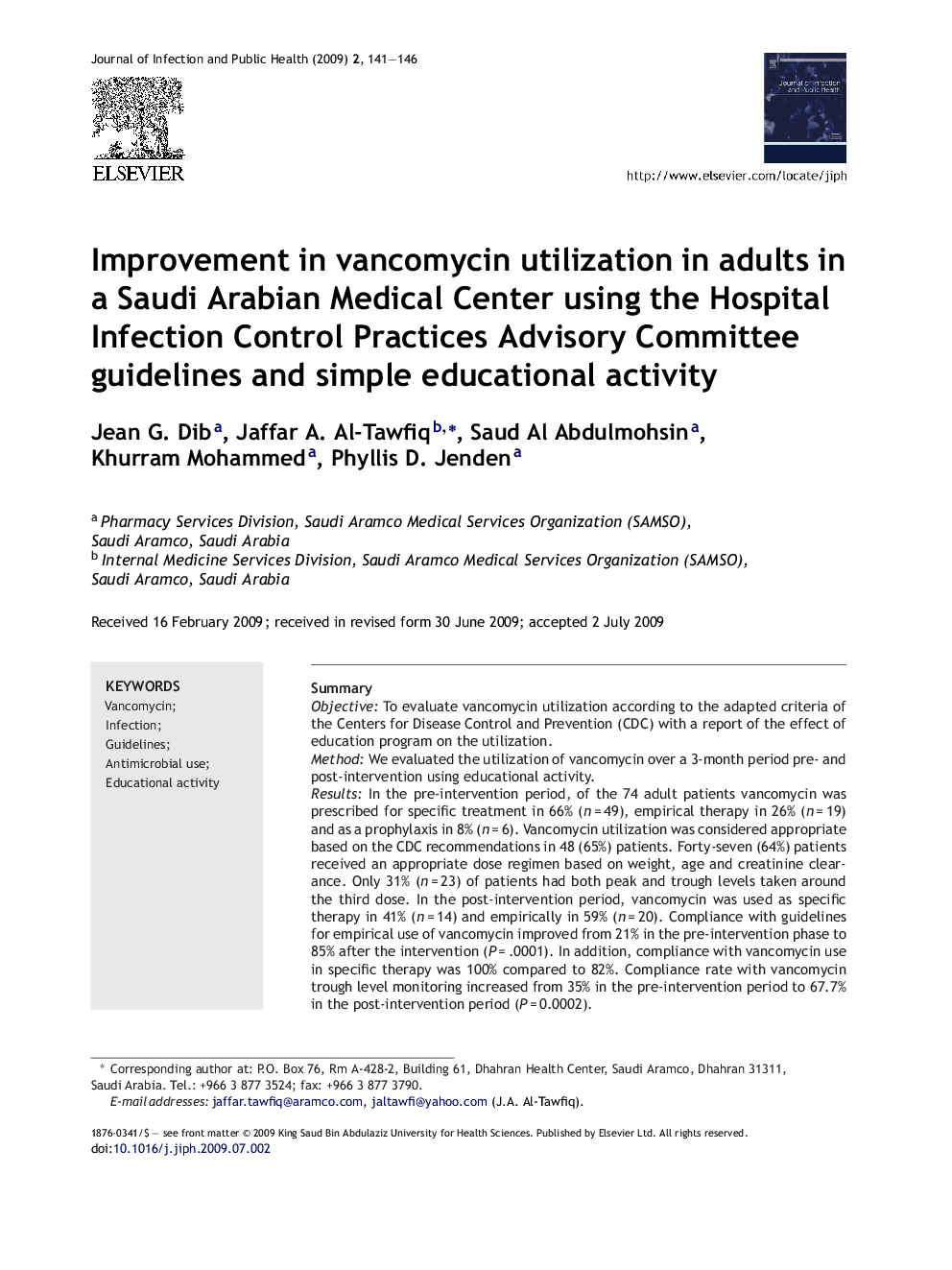| Article ID | Journal | Published Year | Pages | File Type |
|---|---|---|---|---|
| 3406367 | Journal of Infection and Public Health | 2009 | 6 Pages |
SummaryObjectiveTo evaluate vancomycin utilization according to the adapted criteria of the Centers for Disease Control and Prevention (CDC) with a report of the effect of education program on the utilization.MethodWe evaluated the utilization of vancomycin over a 3-month period pre- and post-intervention using educational activity.ResultsIn the pre-intervention period, of the 74 adult patients vancomycin was prescribed for specific treatment in 66% (n = 49), empirical therapy in 26% (n = 19) and as a prophylaxis in 8% (n = 6). Vancomycin utilization was considered appropriate based on the CDC recommendations in 48 (65%) patients. Forty-seven (64%) patients received an appropriate dose regimen based on weight, age and creatinine clearance. Only 31% (n = 23) of patients had both peak and trough levels taken around the third dose. In the post-intervention period, vancomycin was used as specific therapy in 41% (n = 14) and empirically in 59% (n = 20). Compliance with guidelines for empirical use of vancomycin improved from 21% in the pre-intervention phase to 85% after the intervention (P = .0001). In addition, compliance with vancomycin use in specific therapy was 100% compared to 82%. Compliance rate with vancomycin trough level monitoring increased from 35% in the pre-intervention period to 67.7% in the post-intervention period (P = 0.0002).ConclusionIn conclusion, in addition to the utilization of CDC based criteria for vancomycin, we had shown that patient's chart review by a clinical pharmacists with a feed back to the physicians when guidelines were not met coupled with and educational efforts are effective methods to decrease inappropriate vancomycin usage.
